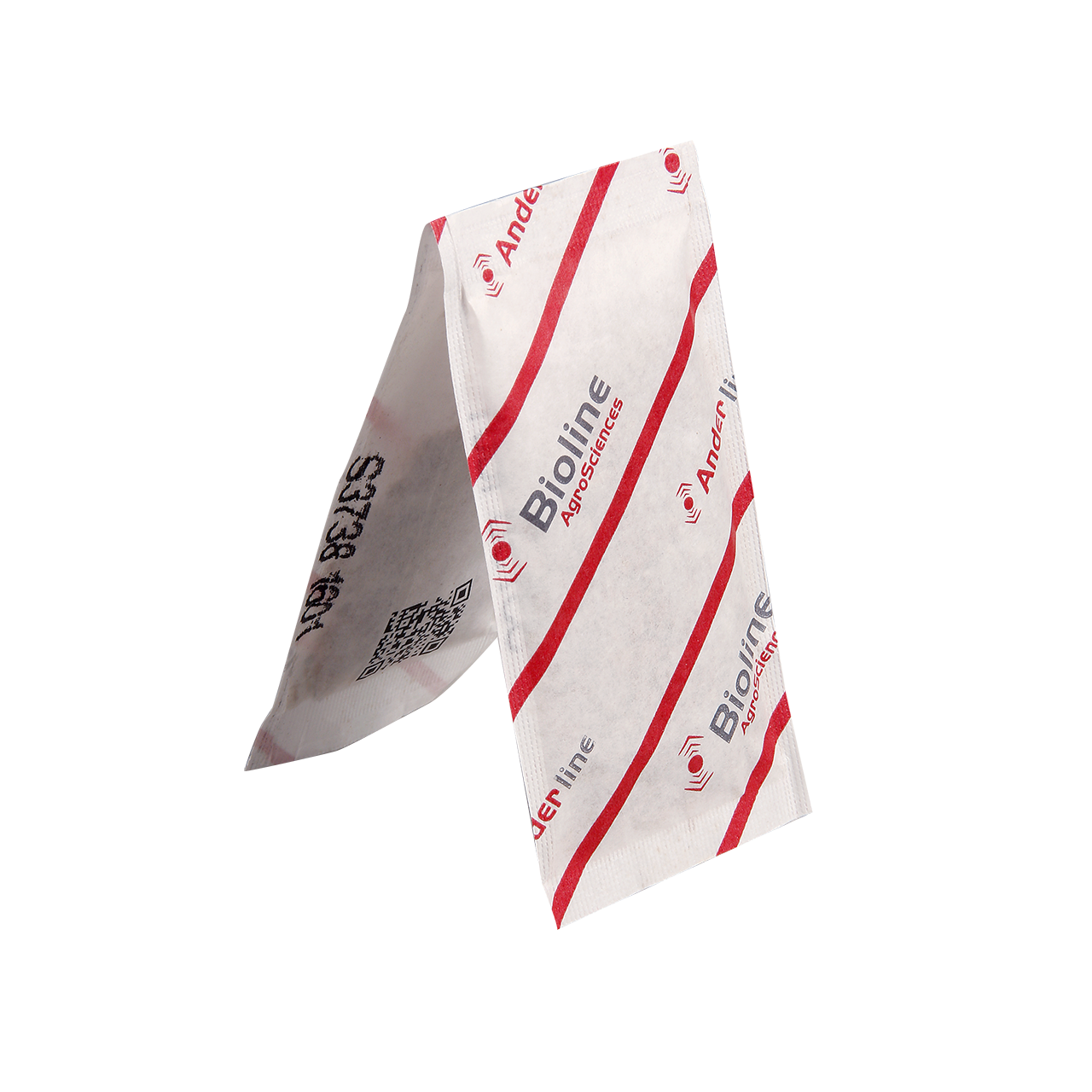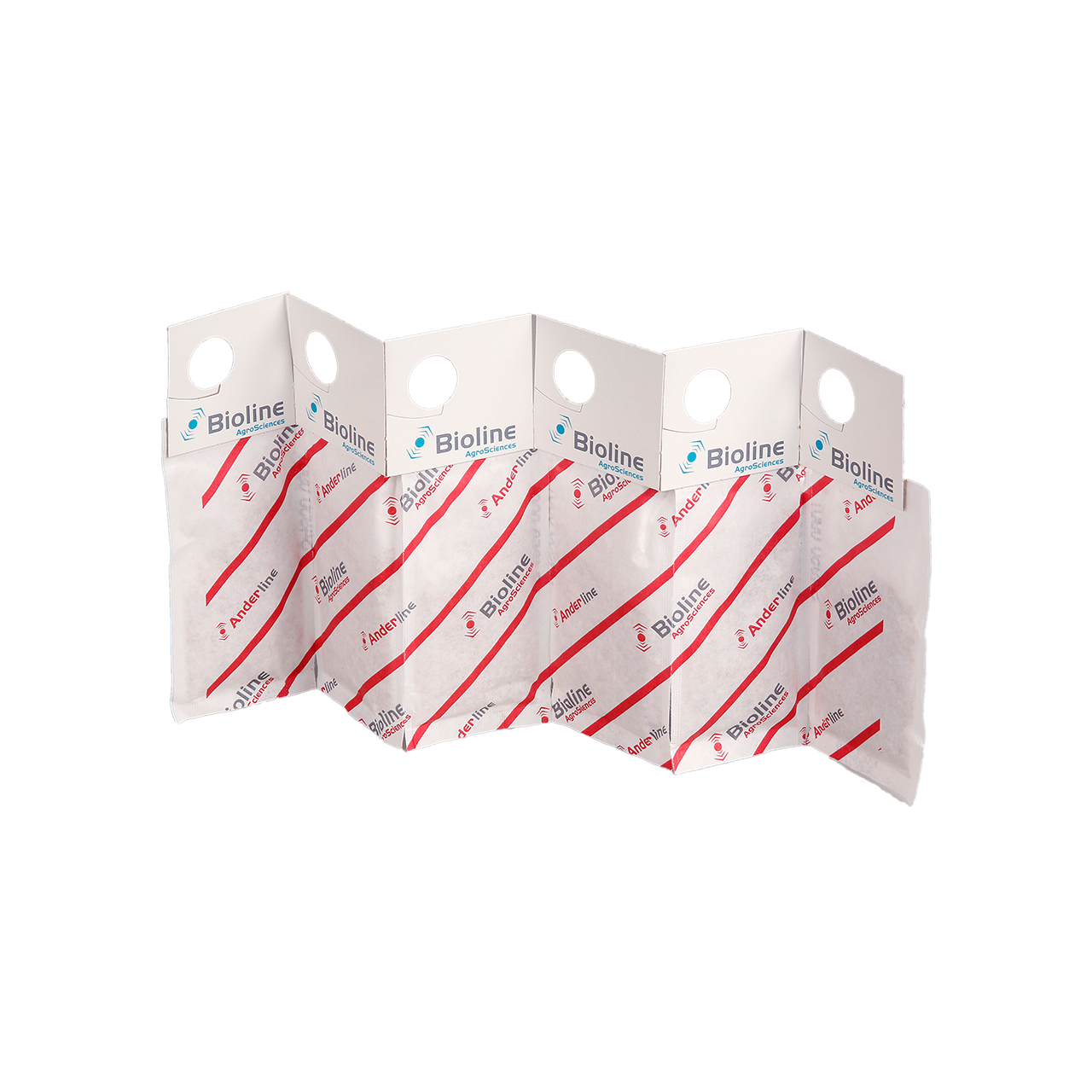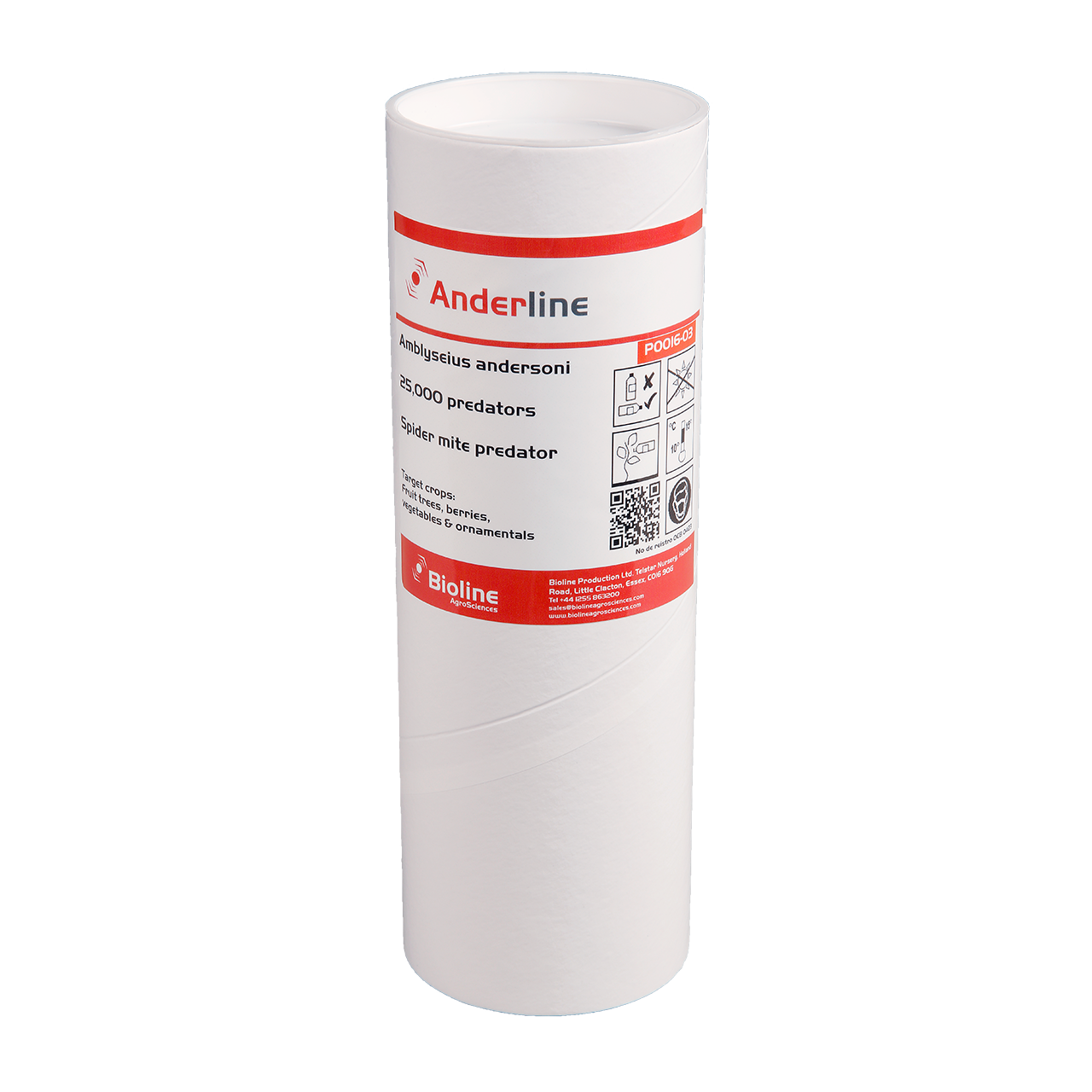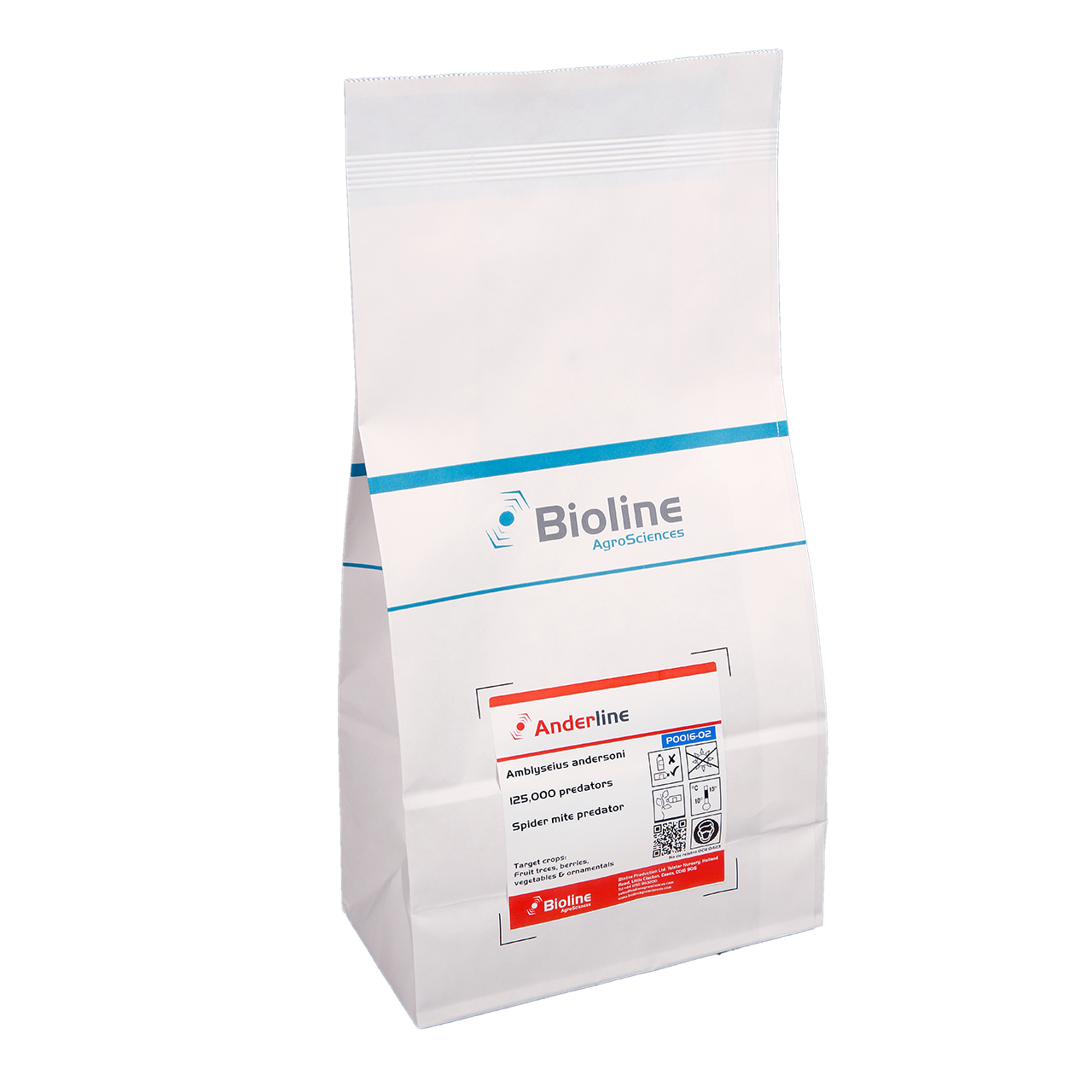Red spider mite (Tetranychus urticae);
Carmine spider mite (Tetranychus cinnabarinus);
Strawberry mite (Phytonemus pallidushrips).
Pepper, cucumber, eggplant, wild strawberry, strawberry, rose, gerbera, chrysanthemum.
1 litre – bottle contains 25,000 predatory mites;
5-litre paper bag contains 125,000 or 250 000 predatory mites;
Waterproof double sachets - the box contains 100 sachets, 25 000 predatory mites;
Mini hooked –sachets - the box contains 200 sachets, 40 000 predatory mites;
Life Line is a continuous tape (50m) consisting of sachets.
Amblyseius andersoni is a predatory mite, its body is light beige or sometimes dirty milky in color and is up to 1 mm in size. The male is smaller than the female, its size is no more than 0.5 mm in length. The female lays several eggs daily under leaves, often along the veins. The adult female lays 50 eggs during its life cycle. The larvae hatch from eggs and do not feed, they have only 6 legs, in contrast to the nymphal instars.
The life span has a standard type of ontogenesis for parasitoid mites with successively changed developmental instars: egg, larva, protonymph, deutonymph, adult (female or male).
The life span at a temperature of 25 ° C: egg (3-6 days) – larva (1 day) – protonymph (3-4 days) – deutonymph (3-4 days) – imago (up to 35 days).
Eggs are oval, light white, partially transparent, their length is up to 0.25 mm, width is about 0.18 – 0.2 mm.
Larvae are matte white, inactive, have 3 pairs of legs, and don’t feed on.
Protonymphs are the 2d instar of pre-imaginal development. They are very active, mobile predators and have 4 pairs of legs. Body length is 0.3 mm. Color is milky white.
Deutonymphs are the 3d stage of pre-imaginal development. They have 4 pairs of legs, also whitish, but larger and more voracious. Body length is 0.4 mm.
| Stage of development | Time of pre-imaginal development (days) at a constant temperature ° С | ||||
|---|---|---|---|---|---|
| 15 | 20 | 25 | 30 | 35 | |
| Egg | 6,07 | 2,24 | 1,61 | 1,23 | 1,14 |
| Larva | 2,71 | 0,97 | 0,78 | 0,53 | 0,5 |
| Protonymph | 5,68 | 1,71 | 1,44 | 1,1 | 1,11 |
| Deutonymph | 7,25 | 1,81 | 1,24 | 1,03 | 1,03 |
| Total | 21,71 | 6,73 | 5,07 | 3,89 | 3,78 |
Adult predators attack all stages of the spider mite. Predator nymphs prefer to feed on eggs, they can prey on other pest development instars. Victims range includes various species of herbivorous mites: Tetranychus urticae, Tetranychus cinnabarinus, Tetranychus atlanticus, Tetranychus turkestani, Oligonychus pratensis, Oligonychus perseae, Oligonychus semen ilicis, Panyndi Four-legged ticks Eriophyidae), Phytonemus pallidus, Polyphagotarsonemus latus (family Tarsonemidae mites). In the absence of spider mites, predators can attack the larvae of thrips – Thrips tabaci, Frankliniella occidentalis (family Thysanoptera).
The predatory activity in feeding spider mite imago is approximately 5 individuals and 15-20 eggs daily. A.Andersoni can feed on pollen as an alternative food, experiments have shown that while eating pollen of Ricinus communis and Zea mays predator population continued to develop. The diet intensity depends on victim population density and the temperature and humidity of the environment.
There are some strategies of A. Andersoni applying.
The preventivestrategy is based on the planned release. It is supposed for a long period. To increase the results, greenhouses buy waterproof sachets with a cardboard hook. Colonization of beneficial insects is carried out in several stages by hanging sachets with a guaranteed content of 250 predators of different instars on each 5th or 6th plant (vegetable crops) or 1 linear meter (ornamental crops). The predators come out of a small hole in the sachets every day for 5 weeks and don’t come back. It is possible to create a stable population of predators on plants even without the presence of pests. This accumulation of predators is successfully used in winter-spring season when the pest in the crop only appears and its numbers are not critical.
The local strategy is designed for the effect of a «live insecticide» and is used during periods of pest population growth or for the rapid application on young seedlings, which have been planted near each other in the greenhouse. Beneficial insects are released at localized breeding outbreaks. For this purpose, the scattering substrate with different instars of predatory mites is used evenly across the crop surface. Applications are carried out weekly for 20-50 individuals per m2 or 20-50 individuals per 1 plant (this is a predator concentration in an outbreak and around its).
| Bioagent name in Latin | Prevention | Doses of the application by infection degree | ||
|---|---|---|---|---|
| Small | Average | High | ||
| Amblyseius Andersoni sachets | 1 ind/m2 | 1 ind/m2 | ||
| Amblyseius Andersoni bran | 20 ind/m2 | 25-30 ind/m2 | ||
| Amblyseius Andersoni vermiculite | 25-30 ind/m2 | 50 -70 ind/m2 | ||
| Frequency of application | 1 time per 3- 4 weeks | In a week | Weekly | Weekly |
Biomaterial (imago and nymphs) can be stored at low temperatures (8-10 °C) in a cooling chamber.




Оставить комментарий